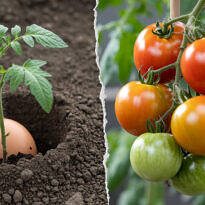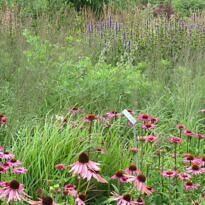Creating a captivating and harmonious garden involves more than just selecting the right plants and decorations. Pathways play a crucial role in shaping the overall experience of your garden. In this comprehensive guide, we’ll delve into the significance of pathways in garden design, explore various functions they serve, and provide expert tips on how to create pathways that not only guide but also enchant and engage visitors.
The Functions of Garden Pathways
Pathways are more than just functional walkways; they are the veins that infuse life and meaning into your garden. Let’s examine some essential functions that pathways fulfill:
- Purpose Beyond Functionality: While pathways undoubtedly serve as practical routes, they should also have a purpose beyond this. They can lead to specific destinations, such as a clearing or a contemplative bench, encouraging visitors to explore different areas of the garden.
- Protection for Plants: Pathways act as guardians, shielding delicate plants from unintentional trampling. This protection ensures that foliage and flowers remain undamaged, contributing to the health and aesthetics of the garden.
- Maintenance and Accessibility: Well-planned pathways provide easy access for maintenance activities, without causing harm to the surrounding plant life. This balance between functionality and preservation is essential for a thriving garden.
- Storytelling and Reflection: Pathways are like narratives; they tell stories about your garden’s journey. They can reflect your personality or the garden’s thematic essence, making each step an immersive experience.
- Sensory Stimulation: Engaging pathways stimulate multiple senses, especially through the use of aromatic plants. Fragrances that waft along the path enhance the sensory journey and create a more memorable experience.
- Emotional Response and Curiosity: Pathways have the power to evoke emotions and curiosity. A well-designed path gradually reveals the garden’s beauty, encouraging visitors to explore and savor each discovery.
The Enchantment of Gradual Discovery
Much like a treasure hunt, a garden should unfold its secrets gradually, keeping visitors engaged and curious. The process of gradual discovery is vital to the overall enchantment of the garden. Here’s why:
- Curiosity Stimulation: By revealing elements of the garden incrementally, visitors are enticed to keep exploring, just as they would while uncovering the layers of a mystery.
- Connection to Surroundings: A well-designed pathway can seamlessly connect various parts of the garden with surrounding structures like the house, pool, or barbecue area. This connectivity integrates the garden into the overall environment, creating a harmonious space.
Crafting the Pathway: Design and Considerations
The Path as a Circulatory System
Imagine pathways as the circulatory system of your garden. They channel not only people but also emotions. Here’s how you can use this analogy to your advantage:
- Flow and Emotion: Consider the pathways’ flow, ensuring they guide people smoothly while allowing emotions to enter and exit gracefully. Like a river, pathways carry experiences.
- Guided Gaze: The pathway’s direction dictates where people look. Strategic placement of plants and features along the path can direct the gaze towards focal points, enhancing the visual experience.
Mapping Access Points
Before laying the first stone, it’s essential to map out access points meticulously. Here’s why:
- Comprehensive Planning: A detailed site plan should mark all access points, from formal entrances to hidden passages. These entryways guide visitors through a carefully curated experience.
- Functional and Aesthetic: Access points are not just functional; they contribute to the aesthetic and logical flow of the garden. Consider points like compost areas and tool sheds as well.
Highlighting Views and Focal Points
Strategic placement of plants and features along the path can direct the gaze towards focal points, enhancing the visual experience.
- Strategic Focal Points: Identify captivating views within the garden. Use plant placement to frame these views and direct visitors’ attention, creating a natural progression along the path.
- Opportunities for Contemplation: Seating areas or pergolas strategically placed along the path encourage visitors to pause, observe, and appreciate the views they have encountered.
Incorporating Preferred Paths
People and pets often forge their paths, revealing preferred routes. Instead of resisting these paths, consider integrating them into your garden design:
- Adapting to Natural Flow: Acknowledge existing paths and integrate them into your design. This approach not only respects the organic way people explore but also enhances the natural aesthetic.
- Pets’ Paths: Pets also have preferred routes. Incorporate these paths into your garden layout, creating a harmonious environment for both human and animal visitors.
Adapting Pathways to Situations
The design of a pathway should respond to its purpose and surroundings. Here’s how:
- Practical Pathways: In some scenarios, a direct path might be necessary for functionality. However, meandering paths with gentle curves can encourage relaxation and exploration.
- Relaxation and Discovery: A winding path can create a sense of tranquility, prompting visitors to wander and uncover hidden treasures along the way.
Stimulating Pathway Discovery
Stimulating the sense of discovery along a pathway adds an element of excitement to your garden. Let’s explore some strategies:
- Mystery in Every Step: Concealing portions of the path or the destination can build anticipation. Gradual revelation keeps visitors engaged and invested in the journey.
- Varied Pathway Widths: Varying the width of the pathway can influence perceptions of space. Transitioning from narrow to wide sections or vice versa alters the perceived scale of the garden.
- Transition Effects: The shift between open and enclosed spaces creates distinct sensations. This transition can evoke feelings of freedom or coziness, enhancing the emotional journey.
Materials and Patterns for Pathways
Selecting appropriate materials and patterns for pathways is pivotal in achieving the desired visual and sensory impact.
Harmonious Patterns in Pathways
- Guiding Principles: When choosing materials for your path, abide by the principles of size, shape, color, and texture. Ensure at least one of these attributes aligns between different materials.
- Visual Consistency: While variety is vital, avoid excessive contrast to maintain visual coherence. The key is to create harmony, enhancing the overall aesthetic.
Illuminating the Pathway
Pathway illumination transforms your garden after dark, guiding visitors and highlighting essential features.
- Guiding Lights: Illumination along the path not only enhances safety but also imparts a magical ambiance. Use lighting to guide visitors along the way.
- Accentuating Focal Points: Illuminate key features like statues, ornamental pots, or unique plants to create a captivating nighttime experience.
Permeable Pathway Materials
Choosing permeable materials for your pathways is not only practical but also environmentally conscious.
- Mitigating Flooding: Opting for permeable materials prevents water accumulation during heavy rains. Impermeable materials could lead to drainage issues, potentially harming your garden.
- Permeable Stone Pathways: Stones are excellent permeable materials that provide both aesthetics and functionality for your garden pathways.
Crafting Pathways with Gravel and Bark
- Pleasing Soundscapes: The crunching sound of gravel underfoot adds a sensory layer to the pathway experience. Including gravel in your design can engage the sense of hearing.
- Natural Elegance with Bark: Pine bark, offers a natural and rustic touch to your pathways. Regular replenishment is key to maintaining its appeal and functionality.
Exploring Concrete and Wood Pathways
- Versatility of Concrete: Concrete provides a wide range of possibilities, from color customization to mimicking other materials. Concrete pathways can seamlessly fit into various garden styles.
- The charm of Wood: Wood is ideal for elevated pathways and adds warmth to the garden. Prevent direct soil contact to prolong its lifespan, and consider alternatives like wooden sleepers or railroad ties.
Grass Pathways and Weed Management
Grass pathways can be both visually striking and environmentally friendly.
- Gentle on the Eyes: Grass pathways offer a softer aesthetic, ideal for gardens with less foot traffic. Their lush green appearance creates a soothing contrast against the surrounding plants.
- Weed Control Strategies: Prevent weed growth by using geotextile fabric beneath the pathway materials. Alternatively, fill gaps with low-growing plants that discourage weed proliferation.
Pathways that Tell a Tale
In crafting your garden pathways, remember that they are more than mere routes; they are narratives. Each stone, each turn, and each texture should contribute to the story you want your garden to tell. A well-designed pathway weaves together form and function, creating a journey of discovery, emotion, and beauty. As you plan your garden pathways, consider the sensory experiences they offer, the views they reveal, and the connection they establish with both visitors and nature.









